
Despite going to sleep late, Justin was up early and went on a walk to the Yellow Fortress and then around the Old Town, when things were peaceful and quiet. The streets that been so crowded around dinner time last night were empty; the square that was full of people was now full of only birds. From the vantage point of the fortress, it was possible to make out mosques, orthodox churches, and Catholic cathedrals all right next to one another. After walking down, Justin went by the Mosque, the Orthodox Church, and by the Catholic Cathedral. Meanwhile, back in the room Crystal had more than enough room to do her yoga.
 |
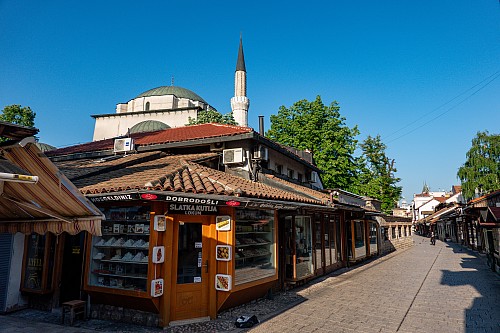 |
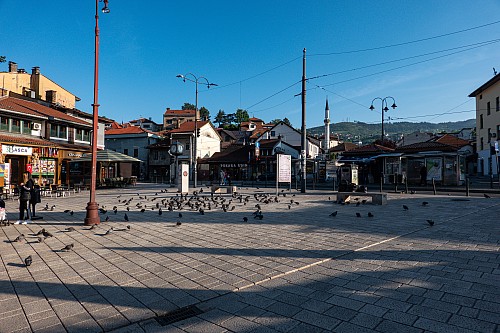 |
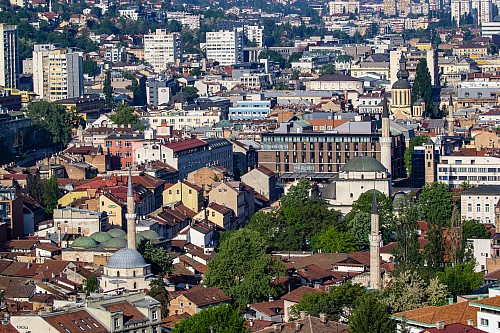 |
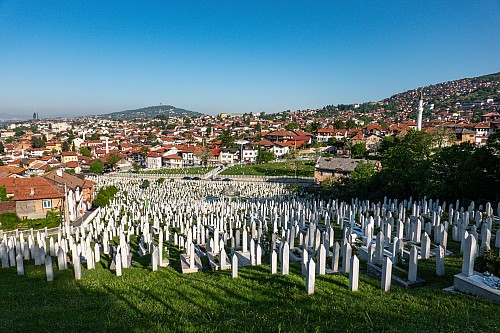 |
At 09:00 we met the group and our local guide for the day, Samra. She showed us some ruins from the 1500s (not Roman times) right next to our hotel, and then walked us over to the Latin Bridge. Apparently the bridge has been renamed twice, first by the Yugoslavians (and mainly the Serbians) to the Princip bridge), and then renamed back to the Latin Bridge by the Bosnians after the break-up of Yugoslavia. Peter elicited a fulsome answer from Samra on this, and it was illuminating to hear that to the Bosnians, they didn’t care too much one way or the other about Franz Ferdinand and his assassination. Samra told us a really interesting fact, which was that the registration number on Franz Ferdinand’s car was 111118 – coincidentally the date World War 1 ended.
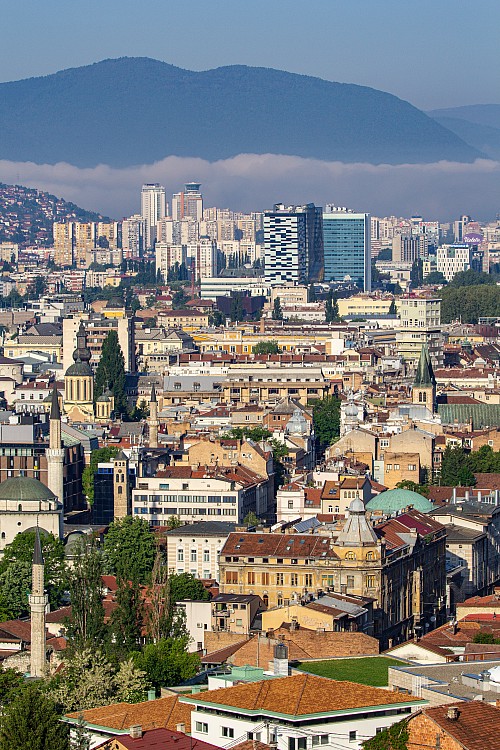 |
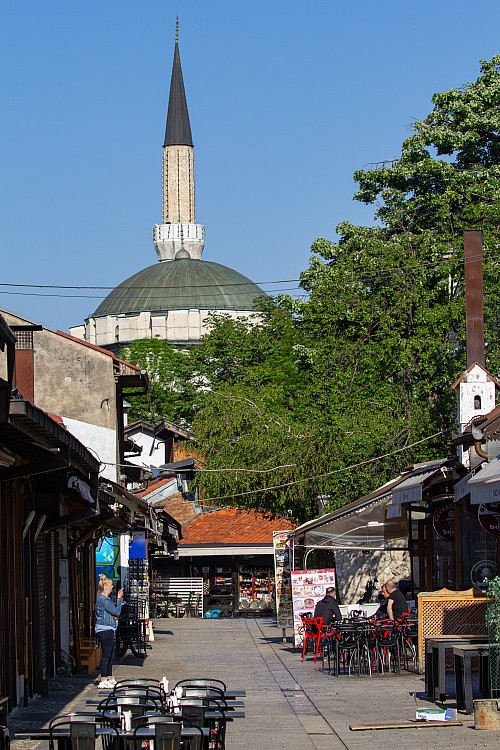 |
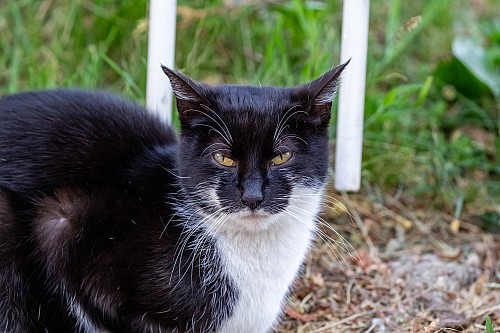 |
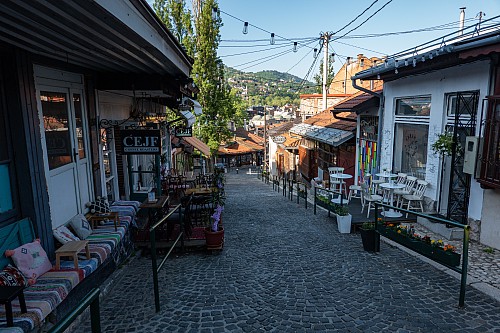 |
We crossed over the river and went to City Hall, which despite its Moorish appearance was actually constructed by the Austrians (and then re-constructed after the war in the 1990s). Samra pointed out the “House of Spite”, which was a house carefully moved – brick by brick – from one side of the river to the other. The Austrians wanted to demolish houses to built the City Hall, and there was one hold-out, who eventually only relented when he was paid more than the house was worth, and with it being moved across the river and re-constructed exactly as it was.
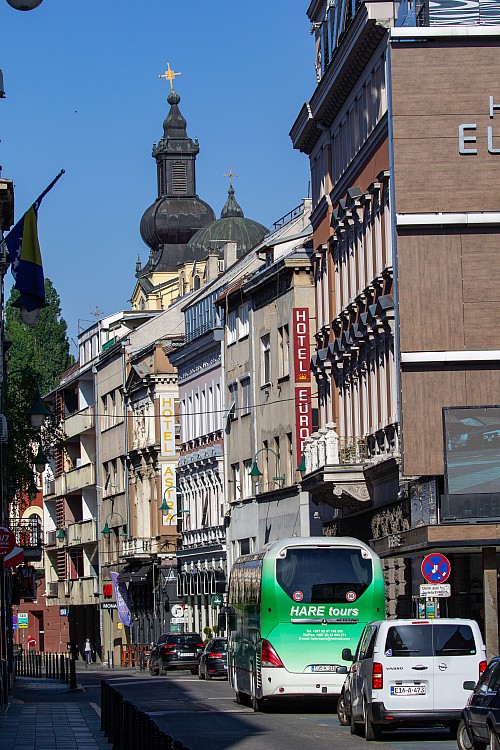 |
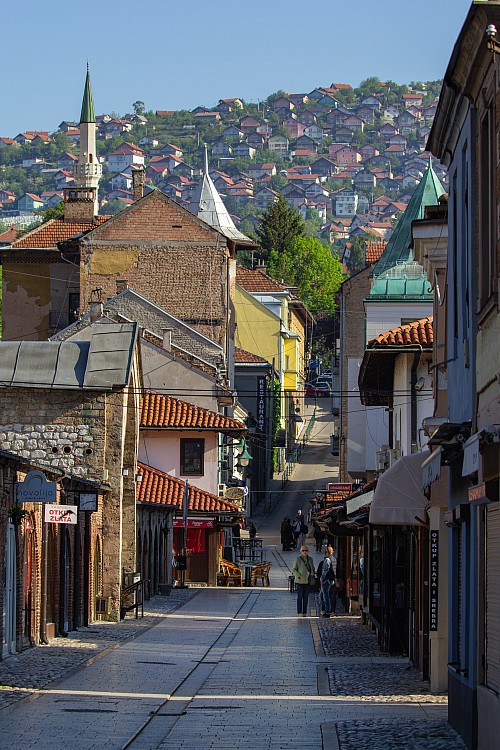 |
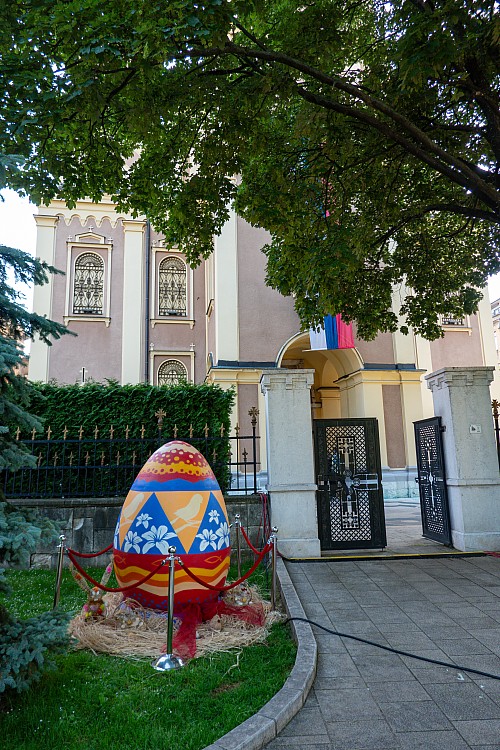 |
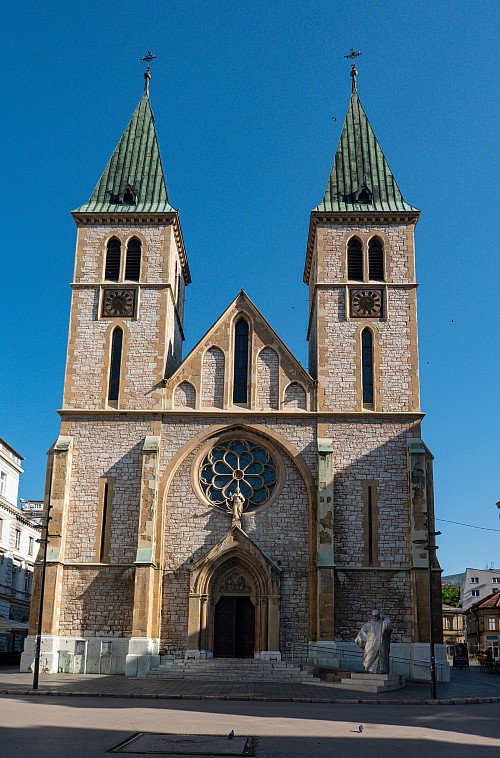 |
We went into the Ottoman part of town and saw some stores, including one with a man who stenciled copper. He showed us a flat piece and how he made shapes in it, then asked if we wanted to see what happened if people didn’t like his flat pieces. He then picked up a baseball bat…and then wrapped the metal around the bat to turn it into a bracelet. He also showed us some old grenades that had been repurposed as vases. Out front were some collectibles where bullets had been turned into airplanes and tanks. A couple of people in the group bought some souvenirs from the shop. We talked briefly about the 1984 Olympics (basically the first one either of us remembered), and asked who the “star” of the Olympics was, as it had been 40 years now. Samra reminded us it was Torville and Dean, a figure-skating pair. Those names sounded familiar.
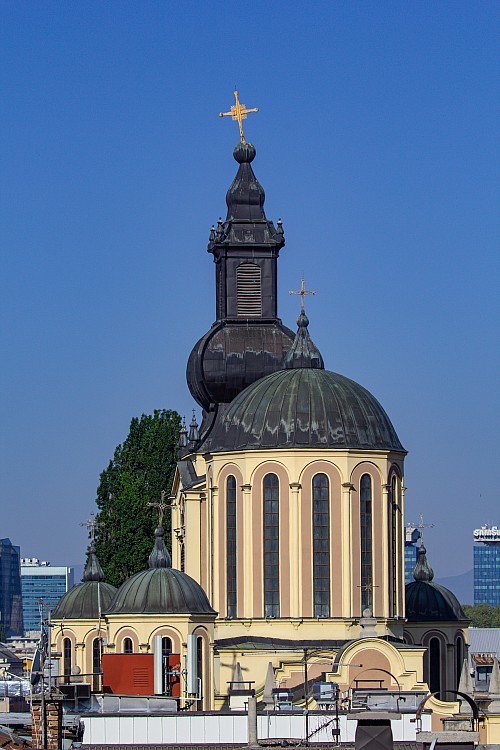 |
 |
 |
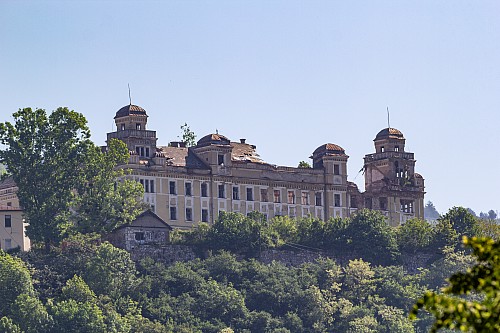 |
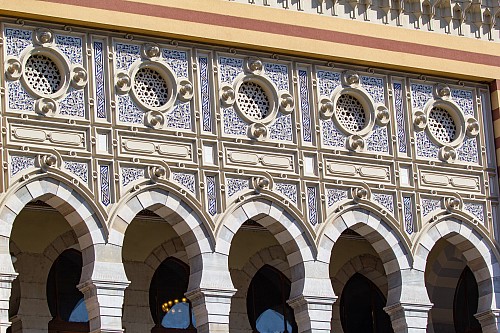 |
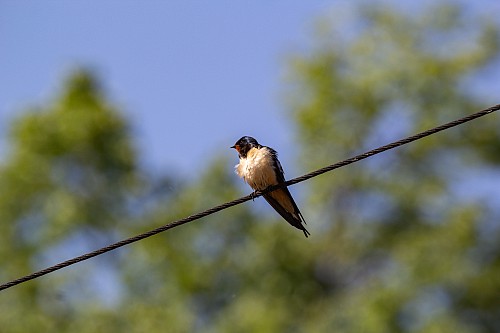 |
In one of the main squares in the Ottoman part of town, where there were hundreds of pigeons feeding on birdseed and bread that seemingly everyone was providing, we saw Drago once more, this time eating at a local café. In that same general vicinity we went to an old Caravanserai, as Sarajevo was along the Silk Road. Now it was a hotel or restaurant or some other tourist-y sort of thing.
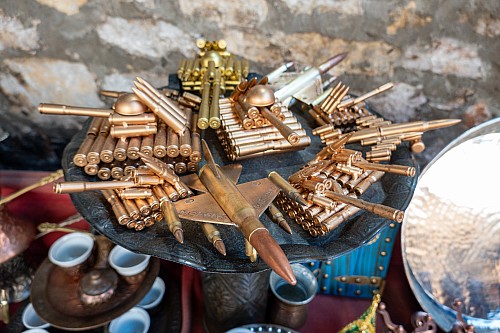 |
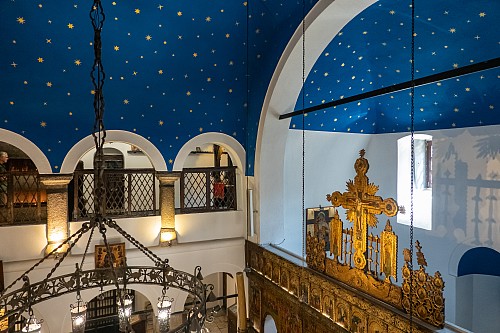 |
From there we went through houses of worship for several different religions. First we went to the Old Serbian Orthodox Church, which had a baby coffin inside. Then we went to the Gazi Husrev-beg Mosque. Samra told us that this was the first mosque with electricity in Europe, put in by the Austrians in 1895. Apparently the Habsburgs had a policy of trying out new innovations in far-flung parts of the empire, and then if they worked, installing them in Vienna. From there we went into a synagogue (really more of a museum) that had the Sarajevo Haggadah, a famous holy book that survived several wars and also the communist era in Yugoslavia. Samra mentioned the book was insured at a couple billion (with a b) dollars.
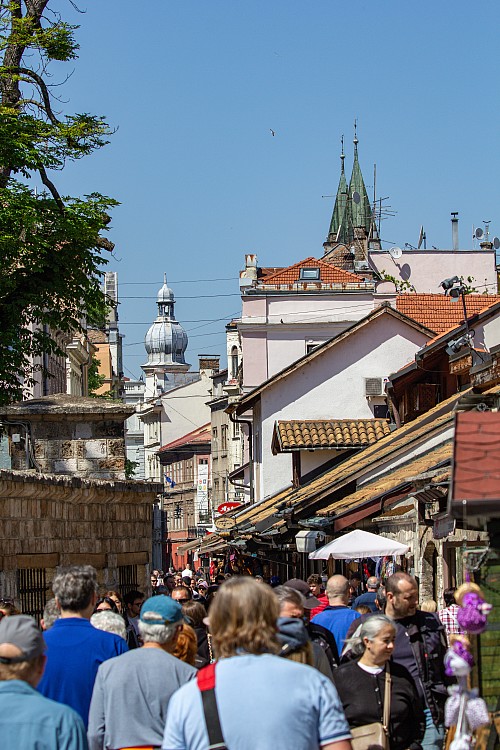 |
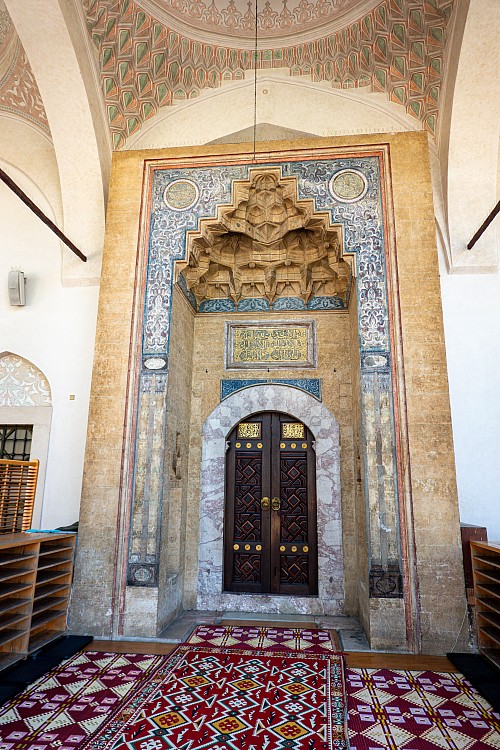 |
A lot of Jews settled in Sarajevo after being expelled from Spain in the 1400s and 1500s. Jews were “most” welcome in the Ottoman Empire, so they lived there for centuries. But then, during WW2, 12,000 of the 14,000 Jews in Sarajevo were killed in concentration camps in Croatia, and now there’s basically a nonexistent population. From the Synagogue we walked by the Sacred Heart Cathedral, which had a statue of John Paul II in front of it, as apparently he’d visited the Cathedral in 1997 after the conclusion of the war with Serbia. We finished our morning walk by another Orthodox Church, the Orthodox Church of the Nativity of the Theotokos. All of these places of worship were within about a 10 minute walk from one another, with there being a well-defined “eastern” part of town with the mosques, Turkish coffee houses, shisha bars, etc., and a well-defined “western” part of town with the churches, pubs, etc. Between the east half and the west half there’s literally a line on the main pedestrian drag calling out the line of demarcation.
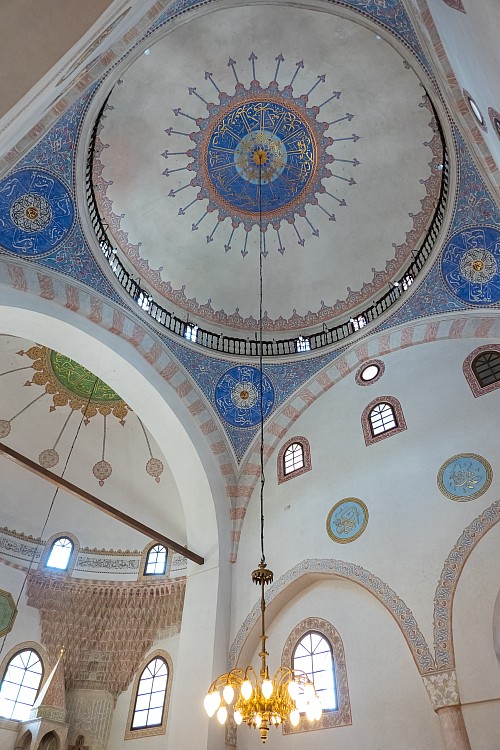 |
We had lunch at a spot right near the hotel, and it wasn’t our favorite. The music was way too loud, even if it had just been the 10 of us. But we also had Omar, the guest who couldn’t (didn’t) join us the night before. He was a politician, and invited political questions, and we just hoped that the conversation could avoid the third rail. Thankfully, while it skirted close, nobody got electrocuted. But talking with him, through no fault of his own, was like listening to a talking head on CNBC or something like that – everything was answered a bit too skillfully, with a lot of word salad and so many caveats as to make almost every answer a non-answer. Maybe it was like deposing an expert witness. The food wasn’t great, either. There was way too much of it. There was a soup, then a plate with salmon and rice (Justin got a risotto), and then a massive bowl of black risotto, full of squid ink, which almost no one ate. We would’ve been happy with some kebabs from a shack on the side of the street.
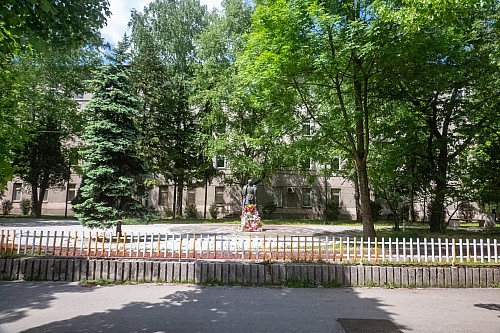 |
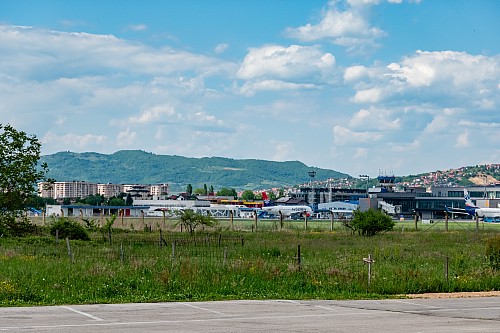 |
After lunch things got a little more real. We got in Drago’s van and headed west, towards the tunnel that the people of Sarajevo used to distribute supplies, people, food, weapons, pretty much everything, during the nearly 4 year siege of the city. To get over to the west we drove along the main street on the north bank of the river, also known as sniper alley. Pretty much every building that was older than 30 years was chock full of bullet holes, obvious even as we drove by. Serbians held positions on the south side of the river, and snipers just picked off people as they tried to get on with their days. Samra told us one of the worst things we’ve ever heard in our lives [jump to the next paragraph if you don’t want to read], about “Sarajevo Safaris”, where people from other countries would come into Sarajevo via Serbia on the weekend, spend the weekend hunting people, and then go back to their desk jobs on Monday.
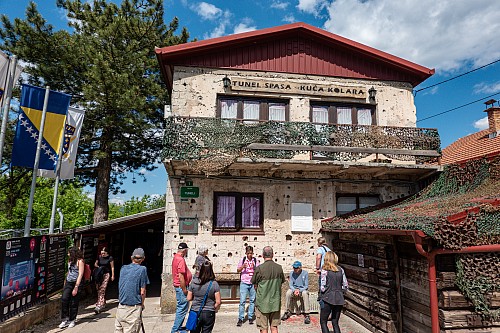 |
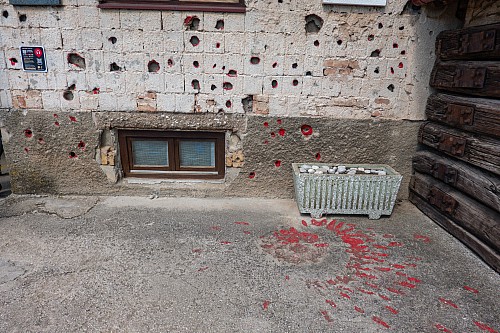 |
Sarajevo was basically surrounded by the Serbian Army, but with one important break in the lines, on a couple of the mountain ridges on the west. So, if you could get to the western part of the city without getting shot, you could maneuver out through the valleys and over the mountains in the west to get out of the country. And if people in Sarajevo needed something, it theoretically could come in from the west. The problem, however, was that the western part of the city and downtown were separated by the airport, which was managed by the UN and kept completely neutral. You could run across the airport runway, but if you were caught by UN forces, they’d either take you back to where you came from (bad, but not awful) or shine lights on you and in the process make it easy for Serbian forces to see you (awful). So eventually, someone had the idea to dig a tunnel directly under the airport runway, connecting a house in a small neighborhood on the west side with a different neighborhood on the east side. It sounded reminiscent of the drug tunnels between Mexico and the US, but for much more humanitarian reasons. The reason that Serbia was able to nearly surround the city is that Serbians held many of the highest positions in the Yugoslav military, so when the country broke up, Serbia had most of the officers, weapons, machinery, etc. Moreover, Bosnia had a significant Serbian population, and when war broke out, lots of Serbs living in Bosnia took up arms against their neighbors, on the side of Serbia (it should be noted not all, however).
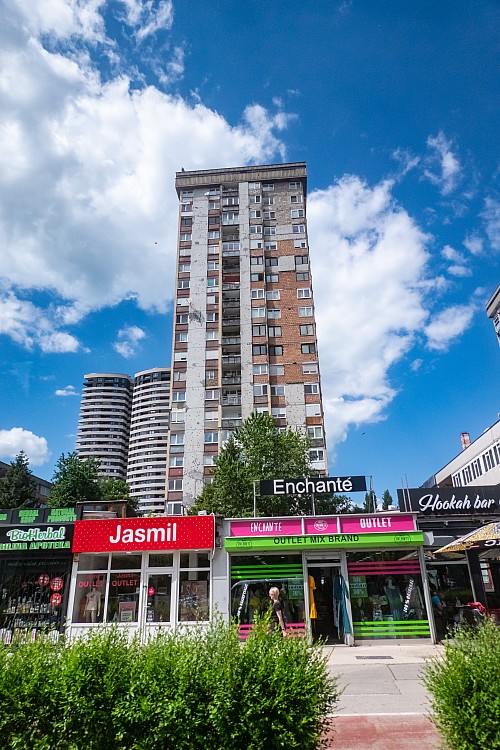 |
 |
In addition to a large Serbian population in Bosnia, there was also a sizeable amount of Croatians, and Justin asked how that worked, and whether Croatia came to the aid of the Bosnians to protect the ethnic Croatians in Bosnia. Samra just sunk her head and said that he had complicated her day (big oops). Apparently at first the Croatian President and the Serbian President reached a secret agreement to join forces against Bosnia, and split the country between them after winning. In fact, it was Croatian forces, not Serbian ones, that blew up the Mostar bridge we’d be seeing soon. But after a couple years of not winning, and increased political pressure from the US and elsewhere, Croatia and Bosnia reached an agreement, and Croatia switched sides. From her reaction, we wonder if Samra had some close friends who were Croatian.
We visited the western edge of the tunnel. The entire tunnel was 1/2 mile long, but the part available to the public is just a small fraction of that, because obviously it’s a safety concern to allow people in a tunnel right under an airport runway. We actually saw an Air Serbia plane take off right as we arrived, which seemed somehow appropriate. We asked about whether the UN forces realized there was a completed tunnel, as it must have been apparent that there were far fewer (if any) people running across the runway, and there were houses on either side of the runway that must’ve had a lot more traffic. Samra said yes, that the French and British eventually figured out the tunnel existed, and the French wanted to do something to shut it down, but the British convinced them to just sit on their hands, so for once, good on the Brits. Also, the tunnel was quite as obvious as we would’ve expected, as there were huge piles of dirt everywhere anyway from building trenches, so the dirt from the tunnel was somewhat a drop in the bucket.
 |
 |
Samra was age 6 when this all started, and 9 when it ended. Her father perished during the war. She and her Mom escaped via the west, driving through the night with no lights on, and she ended up in New Jersey. How she could be a tour guide retelling the story constantly is beyond us, but perhaps it is cathartic. She left the room when one of the videos was showing – we’re not sure if that’s because the images still haunt her, or she’s just seen it so many times that it’s banal. After watching the video, we went through the small portion of the tunnel that’s open to tourists, then got back on the van and went back into town, dropping Samra off along the way. She’s one of the best local guides we’ve ever had, and if you ever plan on visiting Sarajevo, you can find her here.
We got back to the hotel around 16:45, and decided to forego the funicular up the hill to the Bobsled run to go to the Hotel Hecco Rooftop Cafe with Martin. Seeing the Bobsled run sounded fun, but in the late afternoon the view of the city would be backlit and we figured we’d have a hard time seeing things. By contrast, the rooftop café was a bit to the west, and in the middle of town. As we hope, the view was incredible, and we had a table that in the shade to boot. The only downside was that there was no alcohol at the café, so Justin got a mocktail and Crystal got a soda. We asked a ton of questions of Martin and his career, and discussed Baikal, Iran, North Korea, problem clients, beer tours in Central Europe, and more. We hope we can connect with him when we visit Prague in December, as he told us he’d take us to a bunch of local hangouts.
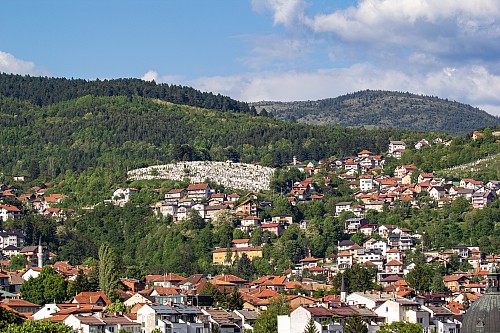 |
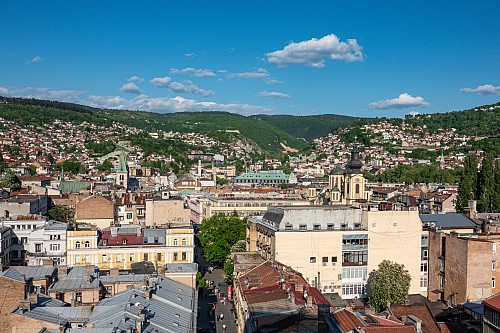 |
After about an hour we parted ways, and the two of us went to Aperitivo around 18:00. This was a cocktail bar we’d read good things about, including that it took credit cards and that there was no smoking inside. It was already closed when Justin walked by last night, but today it was open. We noticed the menu had margaritas, and of course we had to order one each, as it was Cinco de Mayo. They were actually pretty good. This was now the second time we had passable margaritas in far-flung places on Cinco de Mayo, the first being Kyoto, Japan, in 2016.
 |
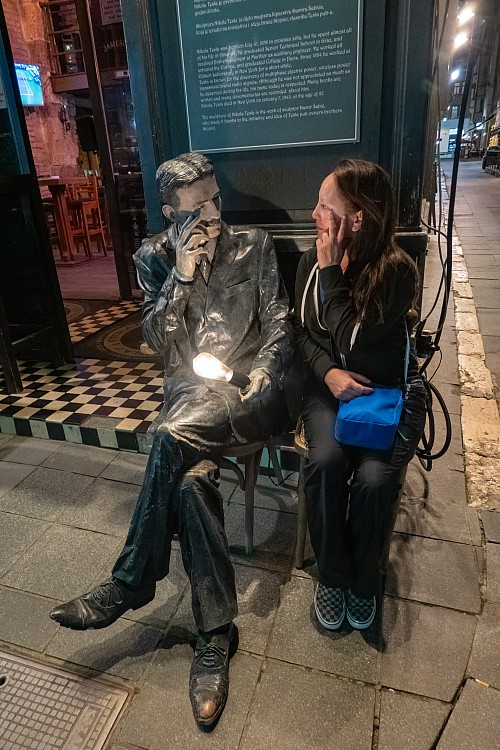 |
Although it was an “individual” dinner, the place Martin had recommended to everyone was already on our short list, so we met the whole group met for dinner at Klopa at 19:00. We didn’t sit by one another, and Justin chatted with Joyce, and also a bit with Bill and Peter. Crystal chatted with Alan and Cheryl, mostly about Wordle. So far so good with the group. The waiter was great as well, being very patient with everyone, and also dealing very well with the separate checks for everyone. After dinner, we went to the Tesla Pub right by the hotel, got two drinks, and watched (sort of) a tennis match on the TV. We got back to the hotel a little after 22:00, and went straight to sleep. Thankfully there were no concerts outside the window tonight.
| Previous Entry |